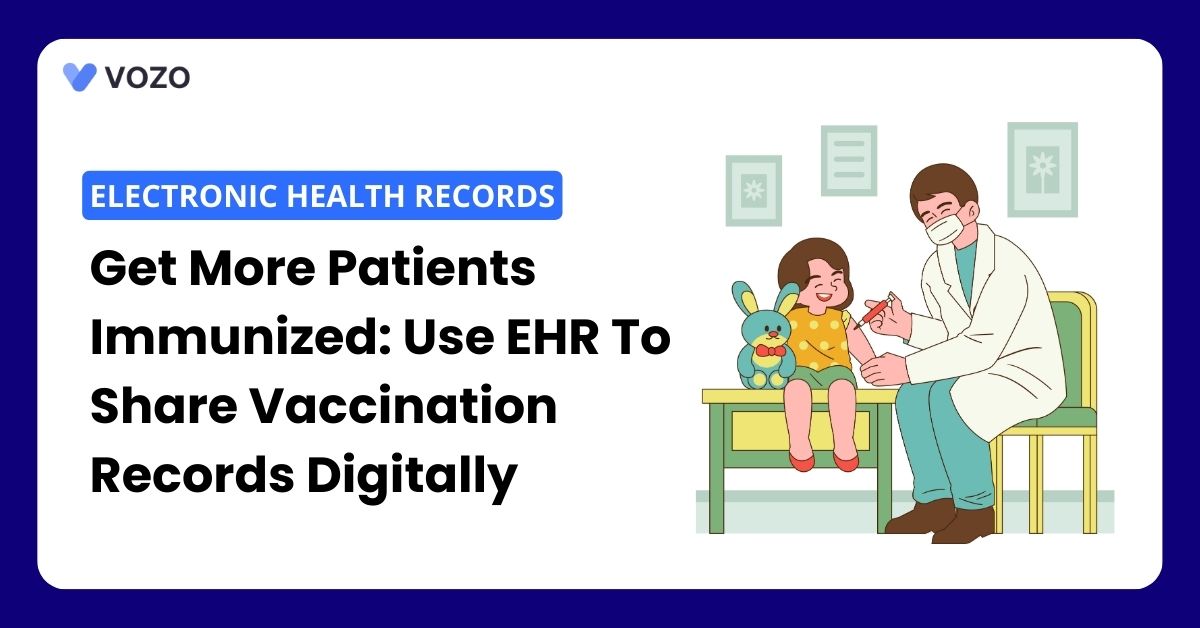Get More Patients Immunized: Use EHR To Share Vaccination Records Digitally
Immunization rates have dropped dangerously low in recent years, putting entire communities at risk for outbreaks of preventable diseases like measles and whooping cough.
As a healthcare provider, you have a crucial role to play in improving immunization rates. One of the most effective ways is to utilize your electronic health records (EHR) system to digitally share patients’ vaccination records.
Related: EHR Custom Medical Forms: Now Providers can Easily Manage Patient Data More Efficiently
The Benefits of Sharing Digital Vaccine Records
Sharing digital vaccine records instead of paper copies offers numerous advantages:
- Increased Accuracy: Digital records are more legible, complete, and accurate compared to paper copies. They reduce errors from handwritten notes or lost paperwork.
- Better Care Coordination: EHR interoperability allows vaccine records to be seamlessly shared between pharmacies, schools, state registries, and other providers. This gives a more comprehensive view of the patient’s immunization status.
- Improved Immunization Rates: Digital records make it easier to determine when patients are due for immunizations, send reminders when vaccines are coming up, and track vaccination coverage across patient populations. This helps improve the percentage of patients who are fully immunized.
The Dangers of Falling Vaccination Rates
Unfortunately, vaccination rates for both children and adults have been steadily declining in recent years. For example:
- Childhood MMR vaccine rates dropped from 94% in 2016 to 91% in 2021.
- The percentage of adults getting the flu vaccine fell from 45% in 2017 to just 43% in 2022.
Low immunization coverage has already resulted in numerous disease outbreaks that could have been prevented through vaccines. There were over 1,200 cases of measles in the U.S. in 2019, compared to barely 100 cases per year in the early 2000s.
The Role of EHRs in Closing Vaccination Gaps
Electronic health records provide advanced clinical decision support, patient outreach tools, and embedded reporting capabilities that can dramatically improve vaccination rates compared to paper records.
Specifically, EHRs like Vozo allow practices to:
- Streamline Registry Reporting: Automated, bi-directional data exchange with regional and state immunization registries reduces the workload for providers reporting vaccine administration data while giving holistic views of vaccination history across sites of care.
- Identify Gaps in Care: Patient dashboards and population health analytics spotlight which patients have fallen behind on CDC-recommended vaccines based on age, health conditions, lifestyle risks, and other data in their records.
- Engage Patients with Reminders: Integrated patient portals, email, SMS texting, and phone tools make sending vaccine due date reminders and recalls to patients simple and automated. Patients get convenient links or callbacks to schedule immunization appointments.
- Optimize Workflow with Alerts: Real-time clinical decision support immediately alerts providers if a patient is due for vaccines during virtual visits, medical appointments, prescription refills, or other touchpoints. Staff can place vaccine orders and refer to the pharmacy all in one seamless workflow.
With adolescent immunization rates under 50% for vaccines like HPV and flu shots below goals for vulnerable adults, maximizing EHR enhancement tools is essential.
Related: Why Shifting to an All-In-One EHR Cloud Solution is Important in 2023? [10 Benefits]
Bring Comprehensive Immunization Management to Your Practice with Vozo EHR
Vozo takes vaccine management to the next level with immunization dashboards, two-way registry connections, and built-in patient outreach. See how Vozo can help you get your community protected by preventing disease outbreaks.
Request a demo today to learn more!
About the author

With more than 4 years of experience in the dynamic healthcare technology landscape, Sid specializes in crafting compelling content on topics including EHR/EMR, patient portals, healthcare automation, remote patient monitoring, and health information exchange.
His expertise lies in translating cutting-edge innovations and intricate topics into engaging narratives that resonate with diverse audiences.














